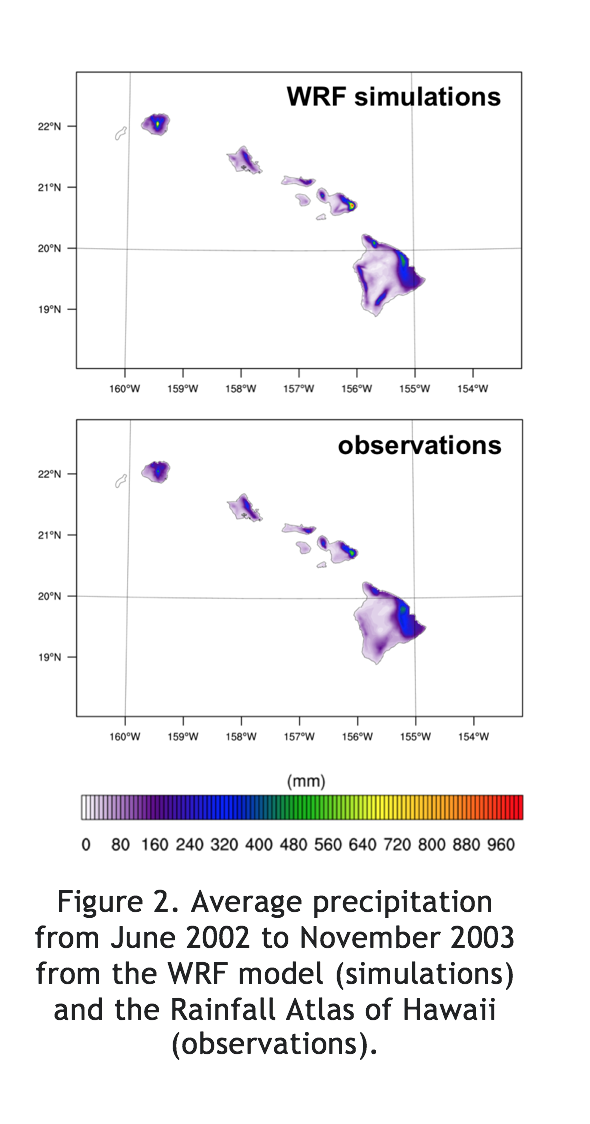Most of the work to characterize and understand impacts of climate variability and change and develop effective climate adaptation strategies in the water sector has been focused on the contiguous U.S. Current tools do not address unique hydroclimate processes and challenges in Alaska and Hawaii, including intense spatial climatic gradients, sparse station networks, and distinctive hydrologic processes, e.g., glaciers and permafrost in Alaska; and volcanic geology, intense rainfall, and high rates of evapotranspiration in Hawaii.
Scientists and engineers in RAL’s Hydrometeorological Applications Program at the National Center for Atmospheric Research are collaborating with the U.S. Army Corps of Engineers, the Bureau of Reclamation, the University of Hawai’i at Mānoa, and the University of Alaska Fairbanks to leverage ongoing research in Hawaii and Alaska and enhanced tool development in the contiguous U.S., along with new data and methods, to better characterize current and future hydroclimates in each location. This work has four main elements: climate mapping, climate downscaling, hydrologic modeling, and streamflow forecasts under climate-changed futures.
This research will provide new tools for water resource planning in Hawaii and Alaska and enhance the development of climate change assessment products elsewhere, specifically:
Historical simulations with the Weather Research and Forecasting (WRF) model are underway in Alaska with 4-km grids (Fig 1). WRF simulates precipitation, snow, and synoptic weather variability (e.g., mid-winter thaw events).
Similar simulations are underway in Hawaii for 1.5-km grids, a scale at which interactions between the atmosphere and the terrain can be explicitly resolved. Preliminary results show that WRF captures the islands’ precipitation features well (Fig 2).
Working with collaborators at the University of Alaska Fairbanks, all weather station networks in the Imiq Hydroclimate Database have been added, roughly doubling the ~400 stations available in national-level datasets. This is a considerable improvement but still a small number relative to Alaska’s size (the contiguous U.S. has ~13,000). Deterministic and probabilistic historical datasets with 2-km grids using these data will be developed using methods outlined in Newman et al. [2015].
Working with collaborators at the University of Hawai’i at Mānoa, observations from multiple weather station networks in Hawaii have been compiled and quality-controlled, introducing newly prod uced or recovered data (from pre-internet computers and paper reports). This station data is now being used to construct both deterministic and probabilistic historical datasets with 250-m grids using methods outlined in Newman et al. [2015].
These advances provide opportunities to:
Use historical WRF simulations to improve gridded meteorological fields. This will prove especially useful in intense spatial climatic gradients in Hawaii and over sparse data networks in Alaska.
Compare dynamical and statistical climate downscaling approaches with techniques that represent the full spectrum of complexities.
Develop large ensemble downscaling products using the newly developed Intermediate Complexity Atmospheric Research (ICAR) model [Gutmann et al. 2016].
Conduct statewide hydrologic model simulations in Alaska and Hawaii using the Structure for Unifying Multiple Modeling Alternatives (SUMMA) framework [Clark et al. 2015], forced with an ensemble of downscaled climate model simulations.
Extend demonstrations of over-the-loop streamflow prediction capabilities in the contiguous U.S. to basins in Hawaii and Alaska.
Continue working with local partners to engage the applications community and refine strategies for extending this work.


NCAR: Martyn Clark (PI), Ethan Gutmann (Co-PI), Andy Wood (Co-PI), Andy Newman, Andy Monaghan, Lulin Xue, Roy Rasmussen, Keith Musselman, Julie Vano
University of Washington: Bart Nijssen
University of Hawaii: Tom Giambelucca, Ryan Longman
University of Alaska: Jessica Cherry, Matthew Sturm
Colorado State University: Glen Liston
U.S. Army Corps of Engineers: Jeff Arnold
Contact: Martyn Clark - mclark@ucar.edu | Julie Vano - jvano@ucar.edu
U.S. Army Corps of Engineers
Factsheets:
2-Pager (same info as this page)
Papers: